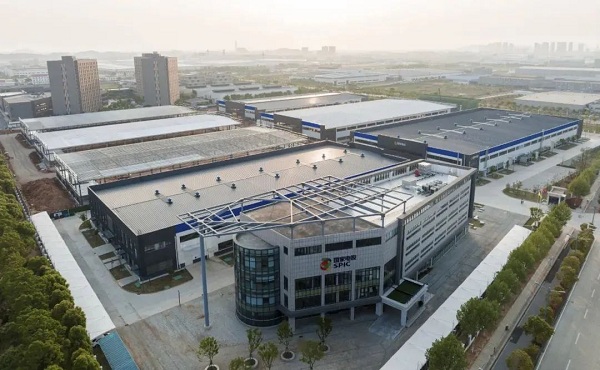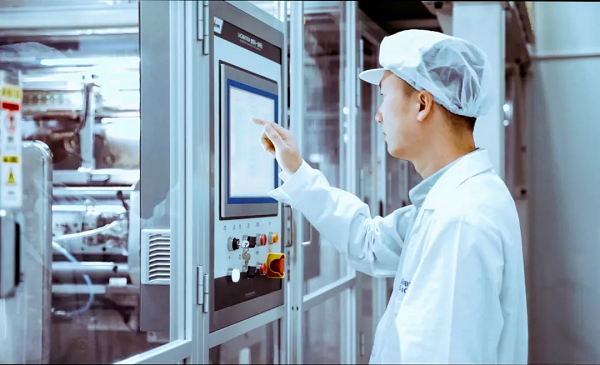

SPIC's hydrogen energy industrial plant at the Junshan New City of Wuhan Economic & Technological Development Zone (WEDZ). [Photo provided to en.whkfq.gov.cn]
By the end of this month, 30 sets of 120-kilowatt "Qingteng" brand fuel cells will roll off the production line at SPIC's hydrogen energy industrial plant, which is located at the Junshan New City of Wuhan Economic & Technological Development Zone (WEDZ) and will be assembled into Dongfeng commercial vehicles and delivered to a local logistics company for use in urban transportation and construction vehicles in Wuhan.
"The plant is expected to achieve a turnover of nearly 200 million yuan ($27.88 million) this year. Among them, more than 400 sets of Qingteng brand fuel cells will be delivered," said Liu Zhen, general manager of Wuhan Lyudong Hydrogen Energy Technology Co.
These fuel cells were independently developed by SPIC Hydrogen Technology Co, a subsidiary of State Power Investment Corporation (SPIC). Wuhan Lyudong Hydrogen Energy Technology Co produces and supplies its core components, including proton exchange membranes, carbon papers, gas diffusion layers, membrane electrodes, stacks, and systems.
As one of the core components of hydrogen fuel vehicles, the hydrogen cell stack is the primary power source. Previously, all critical components in this field in China relied on imports, which posed technological challenges and resulted in high prices.
In this regard, Wuhan Lyudong Hydrogen Energy Technology Co has established a leading domestic fuel cell core component production line and evaluation technical center in WEDZ. With an investment of over 300 million yuan, more than 80 talents with master's or doctoral degrees form the research team.

A production line of Wuhan Lyudong Hydrogen Energy Technology Co. [Photo provided to en.whkfq.gov.cn]
After over three years of construction, Wuhan Lyudong has established seven core component production lines for proton exchange membranes, water electrolysis membranes, carbon papers, gas diffusion layers, membrane electrodes, stacks, and systems. It has become the first to achieve domestic production of critical components for fuel cells, with an annual production capacity of 5,000 sets of hydrogen fuel cells, making it the largest hydrogen energy R&D and production base in China.